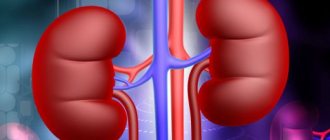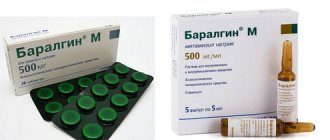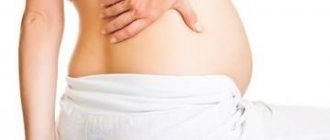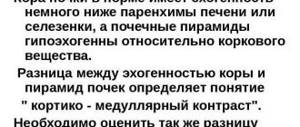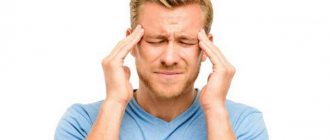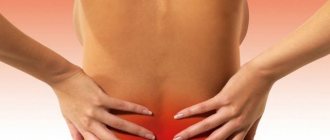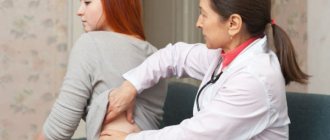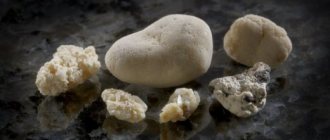Home / Pain
Back
Published: 11/01/2019
Reading time: 4 min
0
1558
When discomfort occurs in the lower back, it is not easy to understand whether the kidneys hurt or it is a problem in the lower back. Diseases of organ systems and parts of the body differ in the nature of pain and the reasons that led to the formation of the disease.
Let's take a closer look at the signs characteristic of kidney pain and pain in the lumbar region.
- 1 Differences in symptoms
- 2 How is it diagnosed?
- 3 Features of treatment
- 4 Videos on the topic
Can your kidneys hurt?
Due to various diseases and abnormalities, the kidneys really hurt. The sensations associated with kidney disease may resemble those experienced by a person suffering from osteochondrosis or radiculitis. Discomfort in the back spreads to the lower half, is felt in the area of the kidneys, extends to the thigh, groin area.
Abnormal mobility of the kidney, in which it descends, is called nephroptosis. Stress is blamed for surges in blood pressure during nephroptosis, dull nagging pain is often attributed to osteochondrosis, and recurring inflammation is attributed to colds.
The lower back may hurt due to the kidneys on one or both sides. In most cases, the cause of pain is inflammation - pyelo-, glomerulonephritis, displacement of stones due to impaired salt metabolism.
Characteristics of pain in the spinal column or back muscles
The pain is mainly concentrated in the lumbar region. It is most often caused by back diseases such as:
- osteochondrosis in all its forms;
- radiculitis.
Painful sensations can also occur for other reasons. They can radiate to the back with the following diseases:
- aortic aneurysm;
- inflammation in the pelvic organs;
- the occurrence of ulcers in the duodenum or gastrointestinal tract;
- pancreatitis.
Lower back pain can most often be sharp, sharp, pulling, or “shooting.” You need to know that if the spine is to blame, the pain is usually concentrated in the middle of the lower back. At the same time, she can move to her feet.
The development of pain in the lower back can occur due to a person being in uncomfortable positions. This occurs when lifting various heavy objects, making sudden movements, being at work, or while sleeping.
If a person has osteochondrosis or radiculitis, then the pain syndrome increases sharply when making movements, since the functionality of the lumbar region in this case is impaired by spasm of muscle structures. You can distinguish pain in the back from kidney damage this way: using warming or anti-inflammatory drugs (ointments) can sharply reduce or completely eliminate the pain shock in the back, but such measures do not help with kidney diseases. Pain in the back can also be eliminated by wearing an orthopedic belt, which will be useless for diseases of the kidney structures.
How to determine if your kidneys are hurting
In addition to painful sensations, there are other signs that accompany pathological processes in the kidneys. Knowing them, you can correctly determine, even at home without the help of doctors, that the pain is caused precisely by problems with the kidneys.
Nature of pain
The way pain of renal origin manifests itself depends on the pathology that caused it. Inflammation of the kidney can be recognized by dull pain and heaviness in the lower back. It occurs due to swelling and stretching of the kidney capsule. The membrane is equipped with many nerve endings, which are irritated and cause pain during pyelonephritis.
Cutting pain in the kidney area in women and men due to renal colic is simply explained. It is due to the fact that the calculus blocks the lumen of the ureter. As a result, the outflow of urine worsens or becomes completely impossible.
The sharp edges of the stones damage the tissue and nerve endings inside the ureter. This is another cause of stabbing pain.
You can distinguish pain of renal origin from sore back muscles by intensity. Muscle pain from dull, aching can change to acute (if you act on the muscles at the source of excitation) or fade away against the background of absolute rest. With kidney pathology, the pain is constant and intensifies during rest.
Localization
By where the pain is felt with the greatest intensity, you can also understand whether it is associated with kidney problems or is it a manifestation of radiculitis. In the first case, lower back pain in men and women is more often one-sided and comes from the depths of the lower part of the body. When only the surface of the back hurts, the discomfort is not related to the kidneys.
Radiation of pain
You can conclude whether your back or kidneys hurt based on the distribution of discomfort on:
- inner thigh;
- groin area;
- lower abdomen.
These symptoms, as well as pain along the ureter, indicate a kidney failure.
Problems of the musculoskeletal system cause muscle pain, which radiates to the lower back, sacrum, and buttocks.
Pain and mobility
Pain in the lower back or kidneys during movement is different. If the cause is muscle tension or inflammation, then discomfort occurs when a person tries to change body position. Often with osteochondrosis or rheumatism, it is not possible to straighten up or bend over.
Kidney pain forces you to look for a comfortable position. While standing, a person experiences severe pain, and lying on his back, turning on his side or getting on all fours, he feels relief.
Response to tapping
You can find out whether your kidneys or lower back hurt by tapping:
- An open palm is applied to the place where the kidneys are projected (the paravertebral region under the lower ribs).
- The second palm is clenched into a fist and lightly tapped on the hand attached to the body.
- Tapping can be done with the edge of the palm or fingertips.
- Kidney pathology is indicated by pain that occurs when shaking.
A person with back pain cannot perform tapping on their own. For this he needs an assistant.
What preceded the pain?
Before determining whether the lower back or kidneys hurt, it is necessary to find out the circumstances that led to the illness. Unusual physical activity - housework, intensive training or exercise without prior warm-up - can cause muscle spasms.
What are the differences?
How to find out if your back or kidneys hurt? First of all, this can be done by the nature of the pain. If a person has hepatic colic, then the pain syndrome will be acute, paroxysmal in nature, since with urolithiasis, the ureter and blood vessels are blocked by stones, which causes partial and sometimes complete impossibility of the outflow of urinary fluid. The stone, with its sharp edges, causes injury to the mucous structures, which causes spasm and irritation of the nerve processes on the walls of the bladder.
If the kidney is inflamed, it sharply increases in size, and its tissue swells. The nerve processes, of which there are many in the kidneys, begin to stretch, and this causes irritation and pain. Pain in this case is dull, aching in nature and concentrated in the right or left side of the lower back. In this case, the pain syndrome is not as pronounced as with typical back pain or with urolithiasis.
The doctor can determine which organ is suffering by tapping the patient’s lower back with the edge of his palm. If it's all about diseased kidneys, then such tapping causes a dull pain in the patient that comes from inside the body. In cases where it is impossible to accurately classify the source of pain, doctors use the following differential diagnostic methods:
- X-rays for osteochondrosis show changes in the spine.
- A general laboratory blood test for back diseases does not show any changes, but for kidney diseases it will reveal anemia, leukocytosis, etc.
- A urine test will clearly reveal kidney disease due to the presence of increased levels of salts, bacteria, etc. in the fluid.
- An ultrasound of the kidney structures will reveal kidney stones and an increase in the size of the organ.
If you have kidney inflammation, it is better not to warm your lower back with medicinal ointments or a heating pad, as this will cause increased pain.
If, when using heat, the illness subsided, then the back is to blame. In any case, if the disease develops, it is best to immediately go for examination to a doctor, and after making a diagnosis, begin treatment for the disease.
Pain in the lower back, radiating to the leg, characteristic of lumbar radiculitis, can also be a symptom of kidney disease. It is important to correctly determine the cause of the pain, because the choice of treatment will depend on this. Radiculopathy can be distinguished from renal pain by clinical features and the presence of additional symptoms, but a final reliable diagnosis can be established only after obtaining the results of an additional study.
Additional signs that your kidneys are hurting, not your back
If the kidneys hurt, then other symptoms appear. The temperature rises sharply (with inflammation up to 39.5-40°C). In the morning, swelling is noticeable, especially on the face, but serious pathologies provoke fluid retention throughout the body. Towards the end of the day, renal edema disappears.
Taking a closer look at the urine, you can notice impurities - blood, pus. In the first case, the cause is tissue trauma during the movement of stones, dysfunction of the renal structures, in the second - an extensive inflammatory process.
Urination becomes more frequent than usual. It is accompanied by burning pain. This is one of the signs of sand movement in urolithiasis.
Kidney pathologies are often associated with pressure surges - special attention should be paid to this. Fluid stagnation due to kidney pathologies provokes self-poisoning. Against this background, sleep disturbances, attacks of nausea, and vomiting occur. These symptoms never accompany back pain caused by spinal or muscular problems.
Women
It is worth saying that kidney disease in women should be considered separately. Thus, such problems often appear in pregnant women in the second half of pregnancy. The explanation for these problems in this case is quite simple: the child grows in the womb, and pressure gradually increases on the mother’s organs, including the kidneys.
Therefore, various problems and diseases affecting this organ may arise. When the kidneys are compressed, the outflow of urine from the organ may be disrupted, which causes an inflammatory process. Pregnant women may also swell in the morning. Frequent urge to urinate often occurs. These problems are not terrible, however, they need to be dealt with.
What are the signs of diseased kidneys in women who do not belong to the above category? Symptoms for diseases of this organ will be the same as described above.
Characteristic symptoms of back pain
With pain of non-renal origin, the muscles seem to go numb, a slight tingling or goosebumps are felt. Relief occurs if you rub the sensitive surface with a warming gel (Apizartron, Capsicam), ointment with a non-steroidal anti-inflammatory component (Voltaren Emulgel, Diclofenac, Naproxen, Ibuprofen), take a medicine based on NSAIDs (Diclofenac, Diclak) orally or use a rectal suppository (Dicloberl).
Kidney back pain is not relieved by ointments and rubbing. To slightly alleviate the sharp pain during stone movement, it is recommended to take a warm bath or apply a heating pad to the lower back. The heat will relax the muscles and eliminate spasms.
Medicines containing diclofenac do not help with kidney pain. The unpleasant sensations subside a little after taking antispasmodics - Baralgin, Spazgan, No-shpa, Papaverine.
Pain after alcohol
People who drink alcohol from time to time may experience kidney problems after drinking beer.
In this case, you can only determine what hurts and what is the cause of the discomfort. After drinking alcohol, there is an increased load on the kidneys and their function is disrupted:
- Any alcohol, especially beer, has a strong diuretic effect. Based on the amount of beer consumed, the load on the paired organ increases 2-3 times, due to which the throughput decreases, the body is poisoned by toxic substances.
- Filtration is reduced, and the amount of fluid that passes through the kidneys decreases. Toxins begin to wash away protein, leading to proteinuria. With frequent drinking of beer, the pathology can become chronic, so healthy cells gradually die. Protein leaching does not allow tissues to regenerate and renew normally, so aging of the body begins much earlier.
- The primary processing of alcohol is carried out thanks to the liver, and the urine that enters the kidneys contains a lot of ethyl alcohol, which must be removed. Due to this, toxic substances negatively affect the paired organ, causing acute pain and organ failure.
If you abuse alcohol, then over time the destruction of blood vessels occurs. In its most advanced state, the problem cannot be treated, and analgesics and other medications do not eliminate the pain syndrome.
Such drugs only worsen the condition, as the load on the liver increases. Pain can only be relieved through hospitalization and treatment in a hospital setting.
In this condition, a person needs to undergo a course of drug therapy and follow a strict diet.
Even if you use natural beer that is properly prepared, it will contain many harmful substances that can activate the functions of the kidneys and liver, causing severe stress.
After drinking alcohol in small quantities, the kidneys can normalize after a few days, provided they use proper nutrition and some folk remedies.
Constant drinking leads to chronic pathologies, and every day the possibility of recovery decreases.
What tests are needed for kidney and lumbar pain?
To cure back pain, self-diagnosis is not enough. The cause can only be eliminated by undergoing a full examination:
- General clinical analysis of blood and urine. In case of renal pathologies, the result of a urine test will show an excess of leukocytes (due to inflammation), red blood cells, excessive amounts of salts (due to urolithiasis), purulent and mucous impurities. High ESR, leukocytosis, and often low hemoglobin levels are detected in the blood.
- Urine samples using the Nechiporenko and Zimnitsky method help confirm pyelo- and glomerulonephritis.
- To identify the causative agent of inflammation, urine culture is prescribed, and the reaction of the cultured microorganism to antibacterial agents is immediately checked.
- An abdominal ultrasound is performed to assess the condition of the kidneys, their size, the presence of foci of inflammation, purulent accumulations, stones, and sand. The peculiarities of the location of the paired organ are also revealed. The kidneys are scanned first while lying down, and then when the patient is standing (to detect nephroptosis).
- Additionally, a tomography is prescribed (if the doctor suspects a tumor in the kidney).
- To diagnose the location of stones, an X-ray examination is performed with intravenous contrast (excretory urography).
- Additionally, tomography may be prescribed (detects vertebral hernias and other formations).
Traditional methods
Before using alternative methods of therapy, you should consult a doctor. Take a tablespoon of corn silk and 200 ml hot water, cook for at least 20 minutes, leave for half an hour. Take a tablespoon at three-hour intervals. The product helps well with swelling.
Take a tablespoon of bearberry and 200 ml of boiling water and leave for half an hour. Strain, take 3 times a day, a quarter of a glass. Take a tablespoon of blue cornflower and 400 ml of boiling water and prepare an infusion. You should take 2 tablespoons at least 3 times a day.
If kidney pain in men is severe, the doctor can prescribe antispasmodic medications that relax muscles and relieve pain, for example, “Papaverine”, “Spazmoverine” or “No-shpa”, “Ketonov”, “Veralgan”, “Metamizol” and many other drugs.
While taking antibiotics, if urolithiasis or another disease is detected, the doctor also prescribes a drug that protects the intestinal microflora to prevent dysbiosis.
To reduce the burden caused by new drugs that have a strong effect on the liver, stomach, and kidneys, specialists prescribe antifungal drugs and a diet containing less fermented milk products. Salty, smoked and spicy foods should not be included in your daily diet.
If stones are detected in the kidneys, then conservative treatment must also be undertaken for this. They take medicine that helps break up and remove stones - Urolesan, Fitolit, Fitolysin - these are high-quality drugs containing plant extracts, which give one hundred percent results for urolithiasis.
But if treatment with various drugs does not help, then surgical intervention is required.
The operation is performed if prolapse of the kidneys, cancer, benign tumor, rupture of renal tissue, sometimes with urolithiasis is detected, in order to remove undissolved stones - oxolites.
To identify the causes of excruciating pain, the doctor interviews the patient and may also tap on the back with the edge of his palm. A dull pain in response to blows will indicate a kidney problem.
1. General blood test. In case of diseases of the spine, the specialist will not see any changes in the blood. But leukocytosis or anemia, as well as increased ESR, clearly hint at kidney disease.
Going to the hospital
It is almost impossible to recognize pain in the kidneys or understand that the lower back hurts from osteochondrosis without a medical education.
A number of tests are required, which include:
- Visual inspection;
- Radiography;
- Tomography;
- Ultrasound;
- Magnetic resonance therapy;
- Pressure measurement;
- Collection of blood and urine tests.
If you came to the hospital earlier and were diagnosed with chronic pyelonephritis, kidney failure, kidney stones or lower back osteochondrosis, then the symptoms that appear indicate an exacerbation of the disease.
Diseases that cause spasms
Provoking diseases - duodenal or stomach ulcers
Many have encountered problems in the lumbar region or spine. Unfortunately, it is not always possible to understand whether your kidneys or back hurt. Pain sensations are different and in order to correctly determine, we suggest analyzing the diseases that cause spasms in the lumbar region. Provoking diseases:
Causes of tingling in the kidneys: diagnosis and treatment
- inflammatory processes in the pelvic area;
- kidney pathologies;
- pancreatitis;
- ulcer of the duodenum or stomach;
- gallstone pathology;
- osteochondrosis;
- radiculitis;
Causes of back pain
You can recognize pain in the kidneys and distinguish it from osteochondrosis by knowing the general symptoms and manifestations.
It is inflammation in the spine and problems with internal organs that can be the main causes of pain. If there are problems with the spine, the following can be diagnosed:
- Osteochondrosis;
- Hernia;
- Protrusion of intervertebral discs;
- Fracture;
- Osteoarthritis;
- Mycosis;
- Tumors;
- Rheumatism.
Photos on the topic:
When the cause lies in kidney disease, the diagnosis is made only by a doctor after a series of tests and a full diagnosis.
Features of treatment
After establishing the correct diagnosis, the doctor prescribes a comprehensive course of therapy. As a rule, treatment consists of rest, minimal exercise and taking medications.
Diet can also help improve the patient's condition. Foods with a lot of spices (anything spicy, salty), dairy products, and limited fluid intake are excluded from the usual diet.
Medicines for pain in the kidneys and lower back are prescribed by the doctor individually, depending on the nature of the problem and concomitant diseases.
For kidney disease, the following groups of drugs are recommended for use:
- Antibiotics. You must first do an antibiotic sensitivity test. The medicine is selected in accordance with the identified infections in the body.
- Diuretics and herbal decoctions.
- Medicines to remove kidney stones.
- Vitamin and mineral complexes.
- Medicines to normalize blood circulation.
- Painkillers and remedies for spasmodic attacks.
- To cleanse the blood of toxic substances, hemosorption, plasmapheresis or hemodialysis are used.
- Paraffin and ozokerite applications, electrophoresis, and dry air baths are used as physiotherapeutic procedures.
- Sedatives.
- Muscle relaxants. Relieve muscle tension, spasms, restore blood circulation in tissues, eliminate pain. They are prescribed in combination with other drugs, because by themselves they do not treat the root cause of the disease.
- Anti-inflammatory ointments and creams on a non-hormonal basis.
- Chondroprotectors. Promote the restoration of cartilage tissue in the initial stages of the disease, prevent the destruction of bone structures.
- Novocaine blockade. This procedure is performed only by an experienced doctor to relieve acute pain in various diseases of the spinal column.
- Massage courses, manual therapy, physical therapy.
- Drugs to enhance immunity;
- Compositions with hyaluronic acid for the restoration of cartilage tissue. Slow down degenerative processes in joints.
Most of the above methods are suitable for the prevention of diseases, as well as treatment in the initial stages.
Medicines for pain in the kidneys and lower back that will help relieve muscle spasms at home: “ No-shpa ”, “ Spazmalgon ”, “ Papaverine ”.
Symptoms
You can find out that your kidney is hurting or your intervertebral discs are inflamed based on the general symptoms and manifestations.
| Disease | Manifestations |
| Osteochondrosis or rheumatism | - Shooting and sharp pain in the back, lumbar region; - Pulling sensation when turning and bending; — Improvement during sleep or after taking a horizontal position; — Localization of pain in the center of the back; — Muscle spasms; - Onset of relief after rubbing and warming ointments. |
| Pyelonephritis, kidney stones or other kidney diseases | — There is almost no back pain, but it can be aching and temporary; — Pain does not come when changing position, in a lying position; — Ointments and anti-inflammatory ointments do not bring results, only painkillers help; — Painful sensations are concentrated in the area where the kidneys are located. |
There are also general manifestations that are inherent in lumbar osteochondrosis and kidney pathology:
- Heat;
- Fatigue, general weakness;
- Swelling in the limbs;
- Constant urination;
- Swelling at the sites of inflammation.
Osteochondrosis
This pathology is a degenerative disease that affects intervertebral discs. Doctors still cannot name the exact cause of osteochondrosis, but it has been established that the provocation of the process occurs due to insufficient blood circulation in the vertebrae.
Cervical. The manifestation of this type of osteochondrosis occurs through pain in the neck or back of the head. Numbness of the fingers, headaches and dizziness are often noted. Types of pain of cervical osteochondrosis include:
- cervical lumbago, which is characterized by sharp pain in the neck and its subsequent increase with movement;
- cervicocranialgia, which is a common pain radiating to the back of the head;
- cervicobrachialgia, a complex of pain that is felt in the neck, shoulders and forearm;
- paresis, regular sensory disturbances and pain due to compression of the spinal cord.
- Tension in the muscles, which is sometimes accompanied by passive pain.
Reference. These are the main manifestations of cervical osteochondrosis, and if detected, you should consult a doctor.
Chest. Diagnosis of this type is difficult due to the fact that many symptoms are very similar to pathologies of the cardiovascular system. The nature of the pain is as follows:
- acute or aching pain in internal organs, as their function is impaired;
- passive pain in the shoulder blade, ribs or thoracic back;
- intense pain and attacks of the respiratory system;
Who is most susceptible to kidney disease?
There is a risk group that is most susceptible to kidney disease.
Therefore, they should first go for a routine examination, especially if the first symptoms of inflammation have already appeared. Typically these are those who suffer from:
- Diabetes;
- Infections and inflammations in the genitourinary system;
- Woman during pregnancy;
- Subject to genetic factor;
- Reduced immunity;
- Trauma and kidney surgery;
- Bad habits.
Diagnostics
If you have kidney problems, consult a urologist. Diagnostic methods include interviewing and examining the patient. Pay attention to the patient's complaints to determine kidney disease.
An external examination of the face, body, and legs is performed. The doctor palpates the kidneys. This makes it possible to obtain a preliminary picture of the disease. For an accurate diagnosis, a urine test is done.
Urine tests for kidney diseases show the level of protein content and the number of red blood cells.
The patient is sent for a general and biochemical blood test. A general analysis allows you to find out the erythrocyte sedimentation rate and protein content in the blood, since in inflammatory diseases an increase in ESR is observed.
Using biochemical analysis, the creatinine level and urea concentration are determined. To determine the type of bacterial pathogen, the antistreptolysin content is checked.
If necessary, the patient is referred for an ultrasound examination to determine the size of the kidney. Examination of the kidney using ultrasound helps determine its size and the thickness of the walls of the pelvis. In this way, urolithiasis is also detected.
How to distinguish problems?
You can distinguish the disease by its symptoms at home if you take a closer look at your state of health.
Thus, with osteochondrosis or arthritis, patients suffer from sharp pain and discomfort during physical activity, spasm and improvement are observed after using warming ointments.
If the patient has problems with the kidneys and internal organs, then there may not be significant back pain; they occur only in an advanced form of the disease or with a cold in the lower back; the discomfort does not go away even in a supine position.
Often with pyelonephritis and nephritis, pain can go down to the hip bones and radiate to the side or stomach.
Video on the topic:
Therefore, it is so important to consult a doctor in time for treatment. If this is not done, kidney failure or kidney dysfunction may develop.
Why are kidney and spine diseases confused?
Not all patients are able to distinguish renal pain from spinal pain. This is due to the fact that disorders occurring in the intervertebral discs often have similar symptoms to pathologies of internal organs. Thus, with osteochondrosis of the lumbar region, people note pain in the projection of the kidneys. Therefore, it is not surprising that the patient assumes that the organ responsible for urine production is painful. Often, painful discomfort in internal organs provokes displacement of the vertebrae and pinched nerves. As a result, their functional ability is impaired and kidney problems arise.
Treatment of osteochondrosis and inflammation in intervertebral discs
To treat inflammation in the intervertebral discs, osteochondrosis or rheumatism, you must first undergo a diagnosis.
To do this, patients undergo an external examination, tomography or ultrasound, measure pressure in blood vessels, and take a general blood test. After this, the following may be prescribed:
- Bed rest;
- Moderate physical activity;
- Massages and rubbing with warming ointments;
- Taking blockers and anti-inflammatory medications;
- Acupuncture and reflexology;
- Dry heat or hardware procedures in a hospital;
- Gymnastics;
- Cupping massage;
- Diet;
- Treatment of inflammation and autoimmune diseases.
The course of treatment is developed only by a doctor and a physiotherapist, but you need to remember that in case of exacerbation or chronic form of osteochondrosis, back pain cannot be treated with massage or gymnastics.
Since this leads to displacement of the vertebrae, pinched nerves and deterioration of the patient’s condition. In case of sharp, constant and cutting pain in the back, the body position can be fixed with a corset.
Diagnosis
Ultrasound examination of the abdominal cavity and organs helps to understand changes in the structure of organs.
Diagnostics allows you to immediately identify lower back or kidney pain, analyze the causes of the formation of pathology and their symptoms. The determination of pathology is carried out as follows: the specialist performs a manipulation by tapping the edge of his palm on the lower back; if the kidneys hurt, the patient feels a dull internal pain. The main diagnostic tests include:
- ultrasound examination of the abdominal cavity and organ (helps to understand changes in the structure of organs, how they behave during the process of change, and also to identify stones);
- a general urine test is necessary to determine low or high urine density, leukocyte levels, protein, salt;
- a general blood test is necessary to determine anemia, leukocytosis;
- X-ray of the lumbar region and spine.
You can learn more about the comprehensive diagnosis of renal pathologies from the video
Important! During the period of kidney inflammation, it is strictly forbidden to warm the organ with heating pads, warming ointments, or gels. It is the specialist, not the patient, who must prescribe the correct treatment.
When the patient has undergone a comprehensive examination, the attending physician is able to make a diagnosis, prescribe treatment and create individual diet therapy.
Remember, if you feel the slightest discomfort, immediately contact a specialist. Timely diagnosis and laboratory testing will help determine the etiology of the disease, establish the causes of its occurrence, and also help quickly relieve all symptoms. In the event of a sharp deterioration in health, a specialist will timely prescribe differentiated diagnostics, which will allow a complete picture of the disease to be drawn up.
